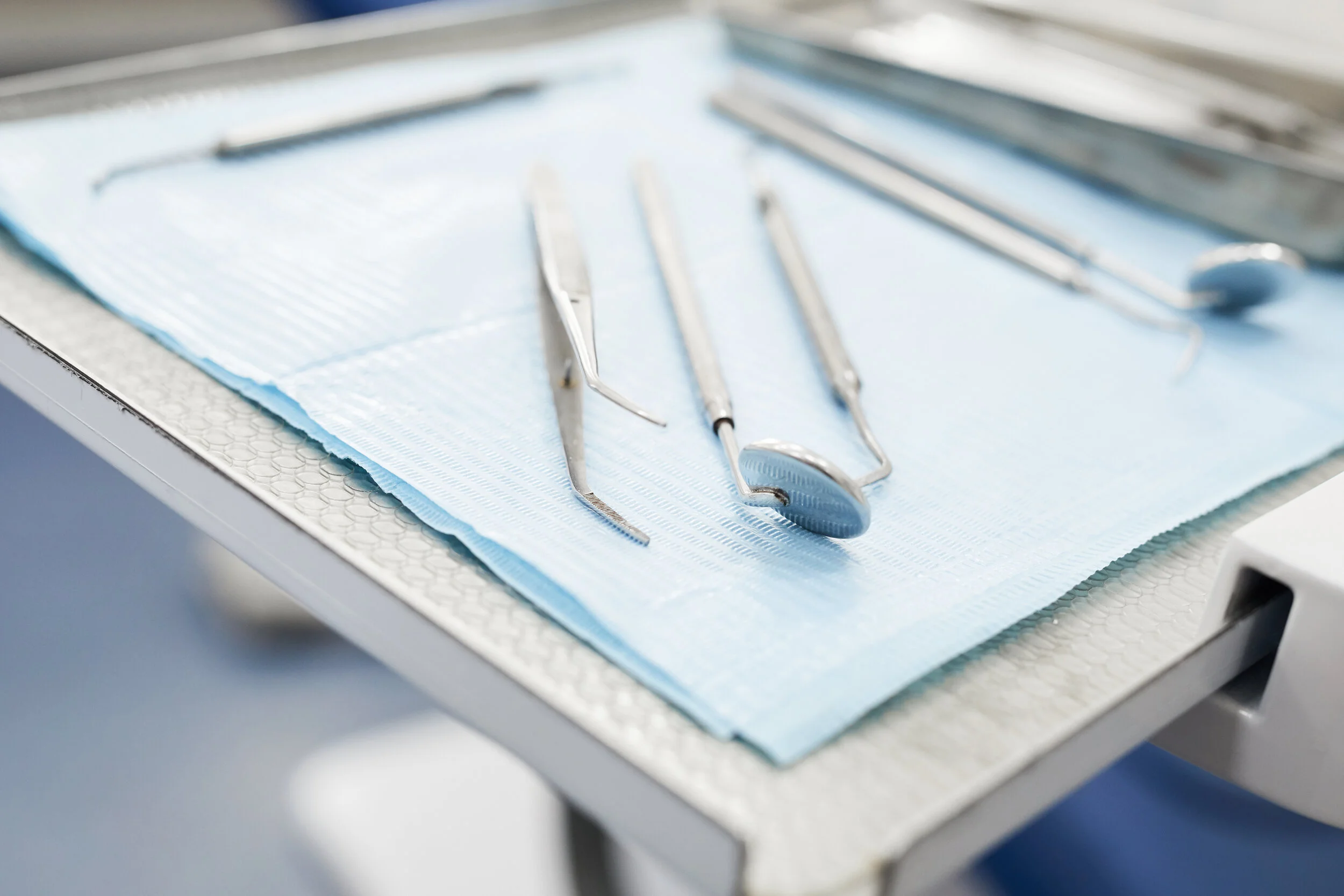
Oral Surgery
Extractions Wisdom Teeth Bone Grafts Anesthesia Services
Life happens. And when it does, our team is here to help. We do our best to provide a seamless and comfortable dental experience.
Extractions
There are times when it’s necessary to remove a tooth. Sometimes, a baby tooth has misshapen or long roots that prevent it from falling out as it should, and the tooth must be removed to make way for the permanent tooth to erupt. Other times, a tooth may have so much decay that it puts the surrounding teeth and jaw at risk of infection, so it may be recommended to remove and replace the tooth with a bridge or implant. Infection, orthodontic correction, or problems with a wisdom tooth can also require removal of a tooth.
Wisdom Teeth
Wisdom teeth are types of molars found in the very back of your mouth.
These teeth usually appear in late teens or early twenties, but may become impacted (fail to erupt) due to lack of room in the jaw or angle of entry. There are many factors taken into consideration when the recommendation for wisdom teeth removal is made.
How does the process work?
Each patient's situation is unique. Your dentist will usually take a panoramic X-ray to determine whether your wisdom teeth will need to be removed. If your dentist recommends removal of your wisdom teeth, it’s best to have them removed sooner rather than later.
Wisdom teeth are typically removed in the late teens or early twenties because there is a greater chance that the teeth's roots have not fully formed. This can make the extraction easier for you, allowing for an easier recovery following treatment.
To remove a wisdom tooth, the area must first be numbed with a local anesthetic. Dr. Pitt can use additional medication to safely sedate you during the extraction if you are feeling nervous about the procedure.
Once your wisdom teeth have been extracted, the healing process begins. Healing time varies depending on the degree of difficulty related to the extraction and your specific health history. Dr. Pitt will let you know what to expect and will provide instructions for a comfortable, efficient healing process. We will want to see you a week following the procedure, in order to check on the healing progress and your overall wellbeing.
Bone Grafting
-
A bone graft involves placing bone material into the empty socket after a tooth is removed. This material acts as a scaffold, encouraging your body to regenerate natural bone over time.
-
You may be a good a good candidate if:
You are planning to replace the tooth with a dental implant or dental bridge.
The tooth was lost due to decay, trauma, infection or gum disease.
The socket left behind is too large to heal properly on its own.
-
Preserves jawbone volume and structure
Keeps nearby teeth from shifting
Supports future dental implant placement
Supports future dental implant placement
Helps maintain facial appearance and symmetry
Reduces complications down the road
-
Bone Loss: Without a graft, bone in the area can shrink by 25-60% within 6 months.
Implant Difficulty: A dental implant may not be possible without a second, more complex bone graft.
Shifting Teeth: Adjacent teeth can move into the empty space, affecting your bite.
Facial Changes: Bone loss can lead to a sunken, aged appearance around the mouth.
More Invasive Treatment: Delayed grafting often requires more extensive and costly procedures later.
Anesthesia Services
-
Nitrous oxide provides a light relaxation and wears off quickly. This type of sedation will allow you to drive yourself home following treatment.
-
This is a type of light sedation induced by prescription medication. During the procedure, you can expect to be very sleepy, but will still be able to communicate with Dr. Pitt and his staff if need be. You will need a driver to take you home following the completion of treatment.
-
IV Sedation is administered for deep relaxation. This is a great option for patients who have extreme anxiety, special needs, or sensitive gag reflexes. Due to the strength of sedation, you will need a ride home following completion of treatment.
Nervous about completing treatment? We offer a few different services to provide you with maximum relaxation, tailored specifically to your comfort level.
What happens next?
-

Implant Services
Implants are a great replacement for extracted teeth, as they look natural and help preserve present bone. Bone grafts are typically required for successful implant placement. To learn more about implant services, click HERE.
-

Bridges or Partials
Although bridges and partials have different requirements, they are both alternative courses of action for replacing extracted teeth. Bridges are great if one tooth is missing, but the remaining teeth in the area are present and healthy. Partials work better for people who have multiple missing teeth in the same area, or are lacking bone necessary for implant placement. To learn more about partials, click HERE.



